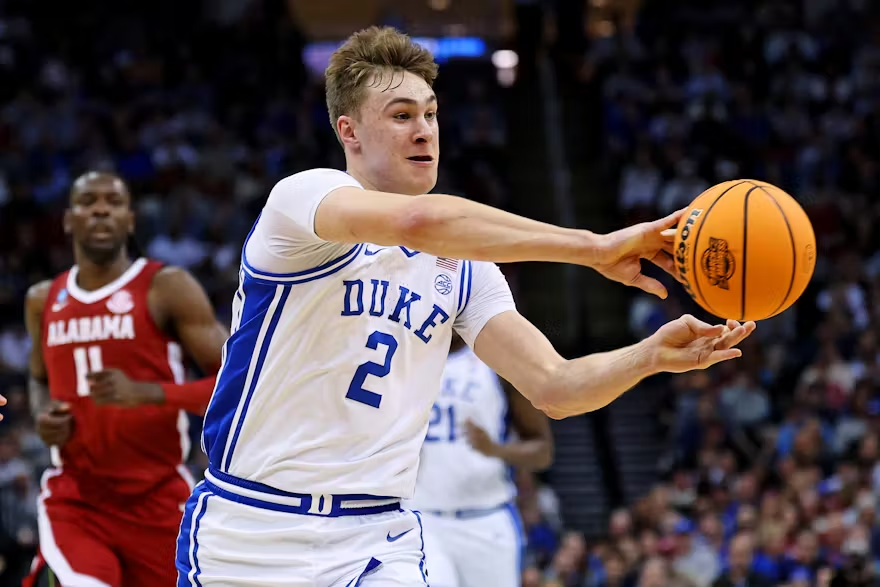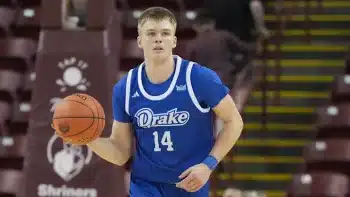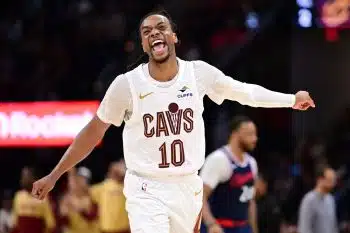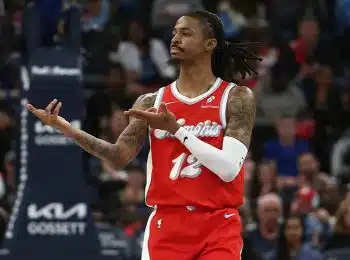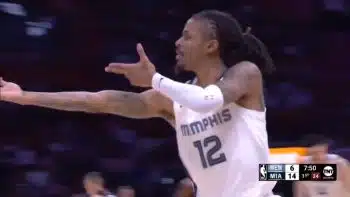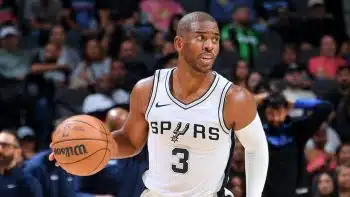NBA
Is There Any Way To Slow Tyrese Haliburton And The Pacers?
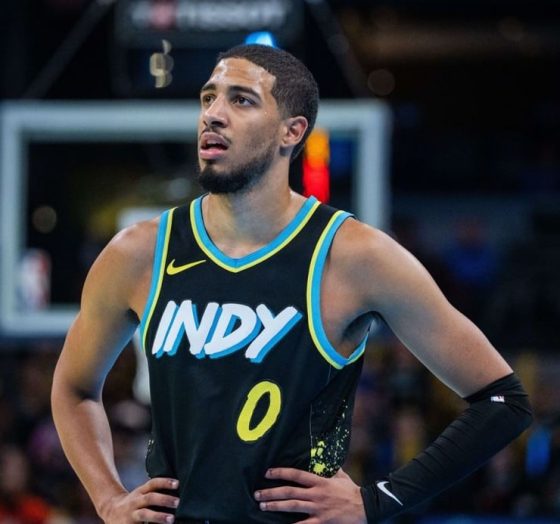
Key Highlights
- The Indiana Pacers lead the NBA in offensive rating at 124.1, three points better than the second-ranked Philadelphia 76ers (121.1)
- On Nov. 19, the Orlando Magic held them to their second-worst mark of the season with a 98.7 offensive rating
- It’s the only game this year that Tyrese Haliburton’s recorded more turnovers (four) than assists (three)
The Indiana Pacers are setting the record books ablaze. They lead the league in offensive rating (124.1). That’s 9.4 points above the NBA average (114.7), the shiniest mark in Cleaning the Glass’ 21-season database, which spans back to 2003-2004.
Relative to the rest of the league, they’re generating regular season offense better than all the titans generally considered the standard for modern offense: the 7 Seconds Or Less Phoenix Suns, the Stephen Curry-Kevin Durant Golden State Warriors, and the James Harden-led Houston Rockets.
Orchestrating this historic start is the wunderkind, Tyrese Haliburton. He’s averaging 26.9 points and 11.9 assists (2.4 turnovers), while shooting 59.6 percent on two-pointers, 44.7 percent beyond the arc and 88.1 percent at the line. His 67.4 percent true shooting is usually reserved for lob-inhaling big men and spot-up snipers. Instead, he’s boogying off the bounce for the majority of his shots.
What Did The Magic Defense Do So Well?
But for one night, Haliburton and the Pacers’ flame was extinguished. Two weeks ago, the Orlando Magic rollicked them, 128-116, in a blowout the final score does not properly reflect. Indiana yielded 98.7 points per 100 possessions — its worst mark in the 17 games Haliburton has played. More notable is its top-ranked half-court offense (107.3 rating) generated just 77.3 points per 100 possessions — its worst mark in any game, including the two Haliburton missed.
Haliburton, meanwhile, posted season-lows in points (12), assists (three) and field goal percentage (28.6, 4-of-14 shooting). It’s the lone time he’s failed to log at least eight dimes or an assist-to-turnover ratio north of 2.5:1. Despite playing a season-low 25 minutes, his four giveaways were his second-most of the year.
So, as the Pacers continue bombarding and dissecting defenses, what, if anything, can we learn from Orlando’s efforts? Is there anything future opponents can glean to slow Haliburton and his potent attack?
From the jump, let’s note that most teams are not as stingy as the Magic. They’re fourth in defensive rating and stocked with an assortment of high-level stoppers in various forms. Nonetheless, their principles and whether they’re maintained in a Dec. 23 rematch are worth assessing.
What Can We Learn From Orlando?
Although Indiana prospers in the half-court, its breakneck tempo is integral to its success. The Pacers rapidly work into their sets and get the ball spinning before defenses are organized. That emphasis catches teams off-guard and allows Haliburton to seamlessly create advantages without working very hard. They’re first in average time to shoot (10.9 seconds), sixth in transition rate (16.2 percent), and fifth in points per 100 transition possessions (132.9).
More importantly, however, is they’re unrivaled in pushing after a bucket, which their 29th-ranked defense often elicits. Their average time to shoot after a make is 13.6 seconds, well above the second-place clip of 14.3 seconds, per inpredictable.
Yet the Magic refused to concede those early offense chances. Indiana’s 10.1 percent transition frequency marked a season-low and its 100.0 points per 100 transition possessions was its fourth-worst number of the year. Orlando constantly picked up ball-handlers well before the three-point line — even pressuring full-court with Jalen Suggs for stretches — and loaded two to the ball.
The Pacers are adept at finding quick driving lanes against a scattered defense. The Magic were having none of that. Whether it be Suggs, Franz Wagner, Paolo Banchero, Anthony Black, Gary Harris, Goga Bitadze or Jonathan Isaac, their blend of size and mobility caused many problems for Indiana’s free-flowing offense.

The attention to detail is exquisite. Dudes were sprinting back toward the paint while simultaneously locating an assignment; most teams don’t aptly balance both. Point-of-attack stoppers didn’t give opposing guards a vacant runway. The reality is a lot of defenses don’t approach the regular season with this level of focus. It’s draining mentally and physically. It’s easier to lock in for, say, 14 seconds than it is for a full 24 potentially.
The Pacers exploit that apathy, much like last year’s No. 1 offense, the Sacramento Kings, did. That’s not a slight to Indiana, Sacramento or anyway around the league. It’s merely the nature of the regular season. Orlando, though, brought the necessary personnel, scheme and vigor to limit part of what makes this offense so lethal.
This intensity and execution seemingly wore on Haliburton a bit. In the second half, when Suggs was once slightly late scurrying to him in the backcourt, he darts into a quick pull-up triple. Sure, it’s a good shot for a premier shooter, but it also looks like one he hurries to launch, aware of the few opportunities Orlando and Suggs have provided to that point.

One counter I anticipate seeing more if Indiana encounters a similar strategy moving forward: starting Haliburton off the ball and setting a flare screen on his man if they shade help toward the initiator. It bore encouraging results a couple times in the second half against the Magic.

Not everything Orlando did revolved around bottling up Haliburton and the Pacers’ transition game. The half-court offense was sticky as well, which stemmed from prioritizing two key areas: dissuading his right-hand drives and containing the Spain pick-and-roll.
According to Synergy, since the start of 2022-23, he’s produced 148 points on 129 possessions (1.15 PPP) going right and 70 points on 70 possessions (1.00 PPP) going left. Now, he’s scored 27 points on 22 possessions (1.23 PPP) this season, but coaxing him left was absolutely a priority. It’s typically termed “Weak” pick-and-roll coverage: forcing someone away from their dominant hand.
The tricky component is doing so can leave room for Haliburton to shuffle into his silky stepback three. He loves hoisting them going left; the majority of shooters prefer stepbacks to their non-dominant side because it’s easier to stay on balance. Watch Derrick White — one of the NBA’s elite perimeter defenders — shade Haliburton that direction and surrender a long ball.

This isn’t even poor defense from White. He contests the jumper pretty well. Haliburton’s just really, really good and saw enough daylight to be comfortable.
Behind Suggs, Harris and Black, Orlando never allowed him to establish that comfort. He attempted just one pull-up three (shown a few paragraphs above) and three triples overall, none of which were stepbacks. The Magic sent him left, had the size to siphon off passing outlets and the point-of-attack range to fluster his downhill endeavors.

Every NBA head coach instructs from the sideline mid-game, and Orlando head coach Jamahl Mosley might win the superlative for most vocal. Whenever his squad is defending, he is calling out “high hands,” “low man,” and other informative details. The players absolutely deserve the most credit for this fourth-ranked defense, but his communication is beneficial as well.
It was on display when Indiana dialed up a Spain pick-and-roll — one of its most fruitful, popular actions — late in the opening quarter. There’s a lot of noise in play, but listen closely to Mosley yelling “Stack! Stack!” from the other end of the floor in the first clip (Stack is another name for the Spain pick-and-roll).

Rarely did the Pacers fashion profitable options out of Spain pick-and-roll. They love springing Buddy Hield free for open threes or to attack closeouts. If he’s blanketed, a driving lane for Haliburton may materialize. If those aren’t available, the big could identify a crease inside and Haliburton wields the passing guile to feed him. None of those panned out. Hield was covered up, ball-handlers didn’t see space and the rolls were junked up.
That’s a testament to the scouting, game-plan and execution. With so many threatening parts to account for, slowing Indiana’s Span pick-and-roll is arduous, though it’s imperative for any successful showing defensively against this group.
Few teams have quelled Haiburton and the Pacers this year. None have given them the business like Orlando did two weeks ago. Not many tout the personnel and synergy to do so either. But any hope starts with crowding the ball on the break and having size on the backline; turning Haliburton into a left-handed driver; and precisely navigating their slippery Spain pick-and-roll.
One team’s done it. Everyone else has four more months to try and join that prestigious club.
